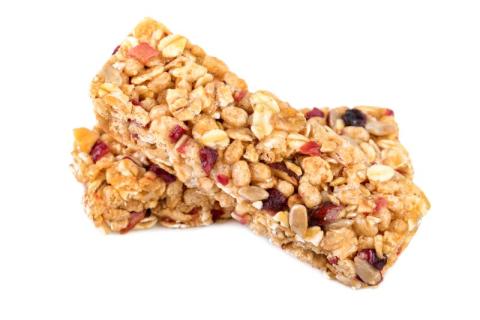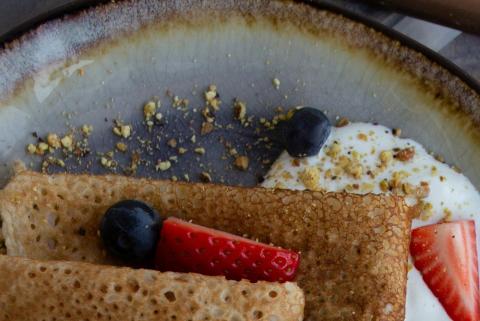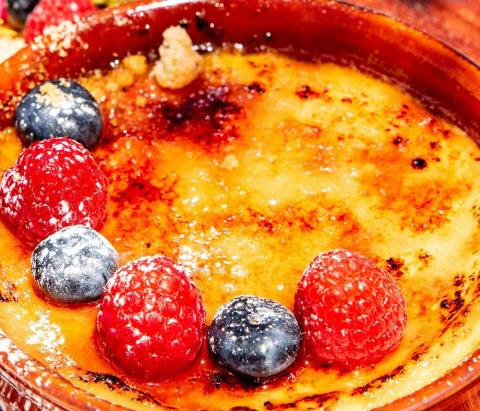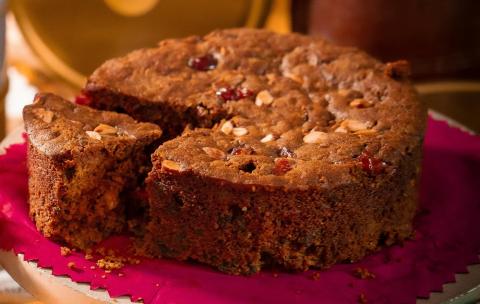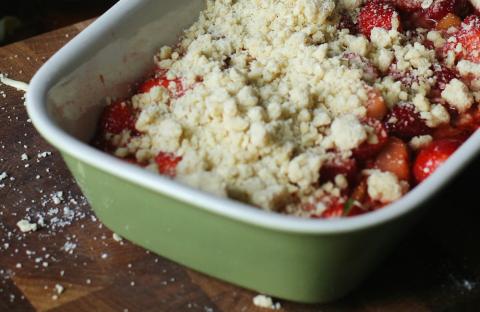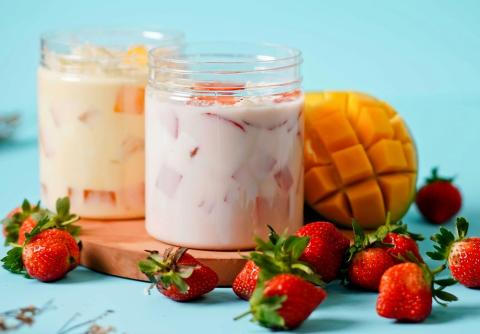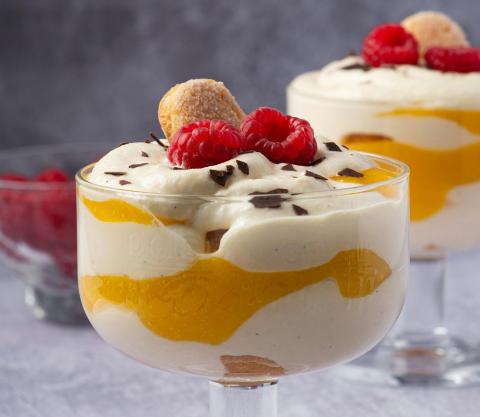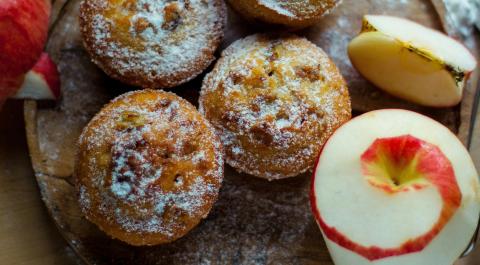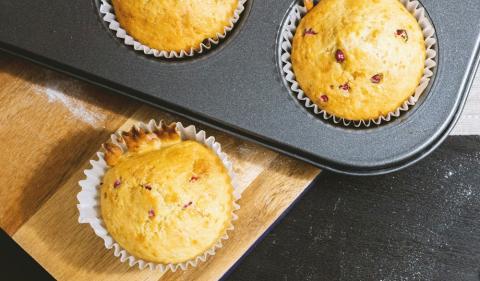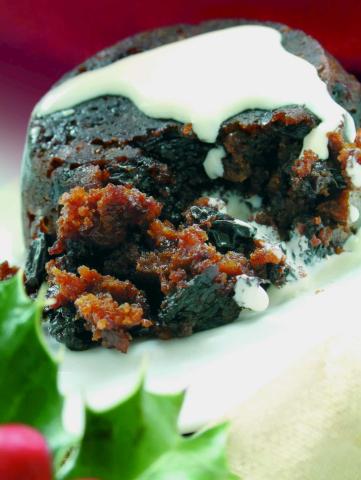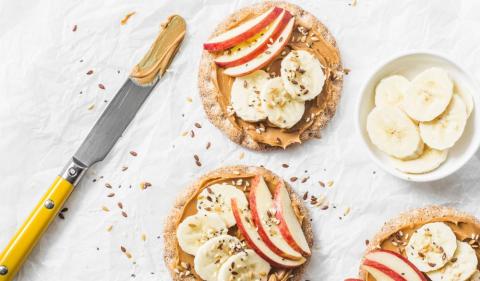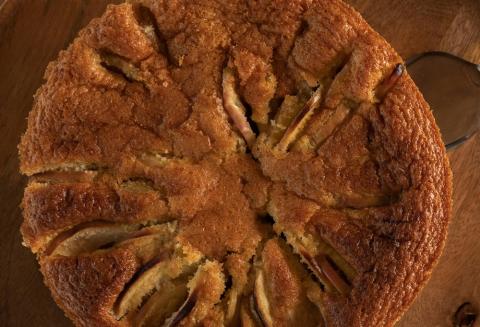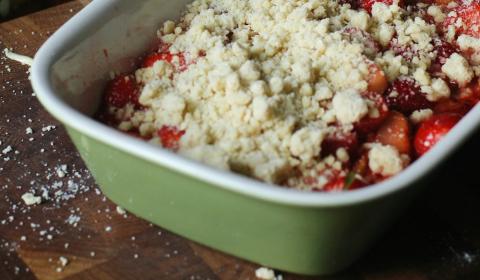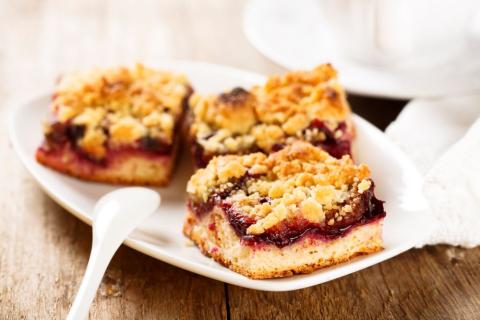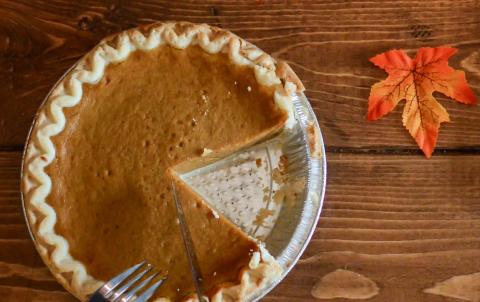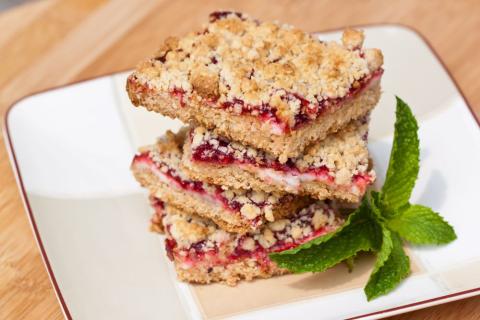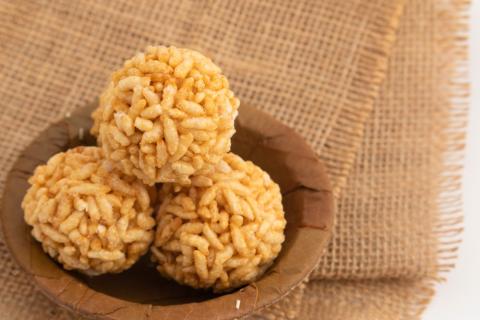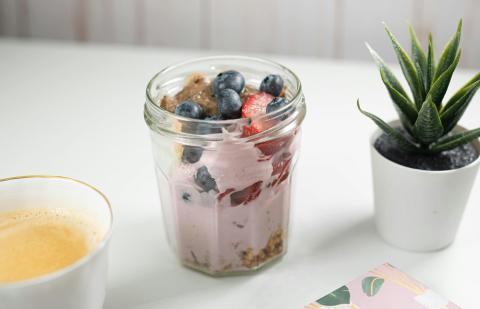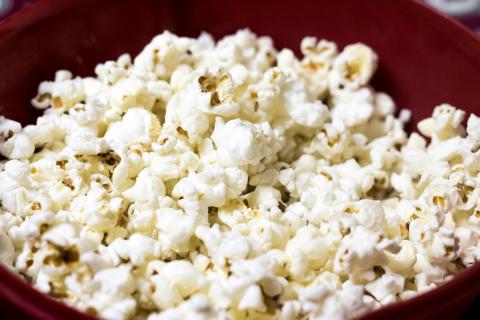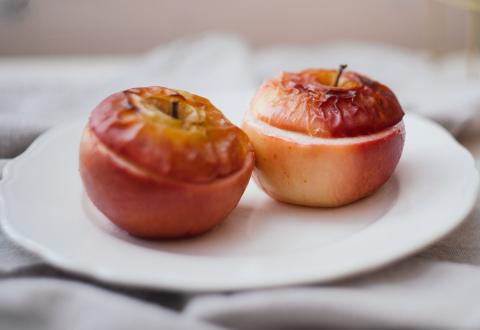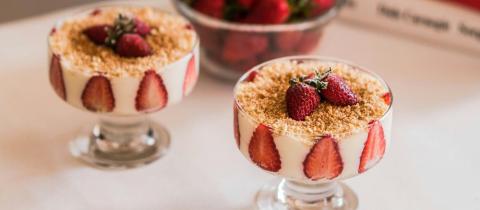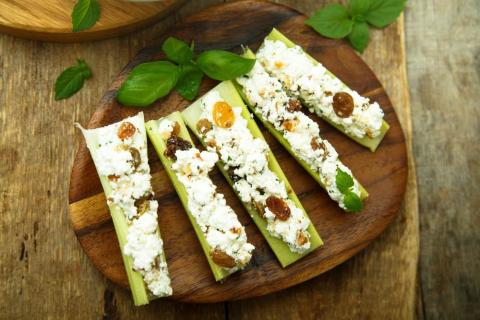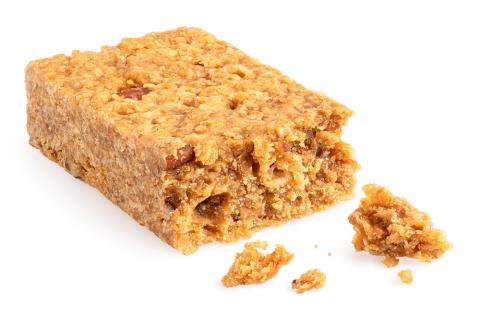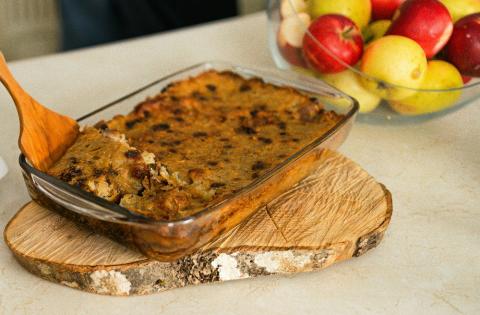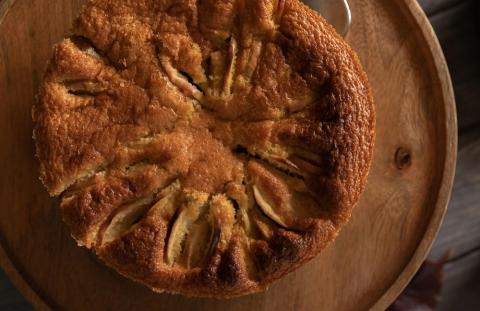- 12 (180g) Dried Dates
- ½ Pints (300ml) Water
- 1 Bag (500g) Dried Mixed Fruit
- 9 Tablespoons (180g) Wholemeal Flour
- 1 Teaspoon (4g) Baking Powder
- 1 Teaspoon (4g) Cocoa Powder
- 1 Teaspoon (3g) Mixed Spice
- 1 Tablespoon (25g) Ground Almonds
- 2 juice only (110g) Oranges
Ingredients
Allergy Disclaimer
Always check the label of each ingredient for allergy warnings.
Method
- In a medium saucepan place the dates and water, bring just to the boil and simmer for approximately 30 minutes. Stir occasionally until all of the dates have broken down to a pulp then leave to cool slightly.
- Preheat the oven to 180°C / 160°C fan oven / 325°F / gas mark 4. Line a loaf or 20cm round tin with greaseproof/ baking paper.
- Apart from the oranges add all other ingredients to the pan and mix together.
- Squeeze the juice of the oranges into a jug or cup and gradually add to the pan until the mixture is moist but not too wet.
- Put the mixture into the tin and bake in oven for approximately 75 minutes. The cake should be browning on top.
Time Saver Tips
This cake can be made in advance and stored in an airtight container once cooled. Use fresh orange juice.
Cost Saver Tips
Can use other dried fruit you may have in cupboard, such as cherries or apricots, as long as chopped to the size of a sultana
Tips for Kids
Use their favourite dried fruit and they can help with mixing the ingredients together.
Nutritional Information
Based on a single serving of 12g (% of an adult's reference intake)
Energy
208 kcals ( 10 %)
873 kJ ( 10 %)
Fat
0.2 g ( 1 %)
Saturates
47 g ( %)
Sugar
37.4 g ( 42 %)
Salt
0.2 g ( %)
Detailed nutritional information
| Per 100g | Per 12g serving | |
|---|---|---|
| Energy Kcals | 202 | 208 |
| Energy Kj | 848 | 873 |
| Protein | 3.8 g | 3.9 g |
| Total Fat | g | g |
| Saturated Fat | 0.2 g | 0.2 g |
| Carbohydrates | 45.7 g | 47 g |
| Total Sugars | 36.3 g | 37.4 g |
| NSP Fibre | 2.9 g | 3 g |
| Sodium | 64 mg | 66 mg |
| Salt | 0.2 g | 0.2 g |
Find out about nutritional labelling
Nutrition labels on the front of packaging
- Most of the big supermarkets and many food manufacturers display nutritional information on the front of pre-packed food.
- Front of pack nutrition labels provide information on the number of grams of fat, saturated fat, sugars and salt and the amount of energy (in kJ and kcal) in a serving or portion of a recipe.
- The labels also include information about reference intakes (expressed as a percentage) which are guidelines about the approximate amount of particular nutrients and energy required for a healthy diet.
- The colour coding tells you at a glance if the food has high (red), medium (amber) or low (green) amounts of fat, saturated fat, sugars and salt.
- The more greens on the label, the healthier the choice
- Amber means neither high nor low, so you can eat foods with all or mostly ambers on the label most of the time.
- Reds on the label means the food is high in that nutrient and these are the foods we should cut down on. Try to eat these foods less often and in small amounts.
Food shopping tips
If you’re trying to decide which product to choose, check to see if there's a nutrition label on the front of the pack. This will help you to quickly assess how your choices stack up. You will often find a mixture of red, amber and green colour coding for the nutrients. So when you're choosing between similar products, try to go for more greens and ambers and fewer reds if you want to make a healthier choice.
 Activities & Play
Activities & Play Behaviour
Behaviour Childcare
Childcare Development & Growing Up
Development & Growing Up Family, Friends & Relationships
Family, Friends & Relationships Feeding Your Baby
Feeding Your Baby Food & Eating
Food & Eating Health & Safety
Health & Safety Mental Health & Wellbeing
Mental Health & Wellbeing Money & Work
Money & Work Online Behaviour & Safety
Online Behaviour & Safety Pregnancy & First Days
Pregnancy & First Days School & Education
School & Education Sleep
Sleep



